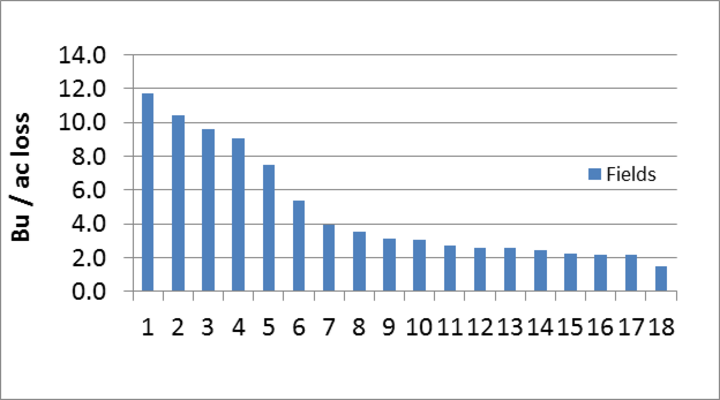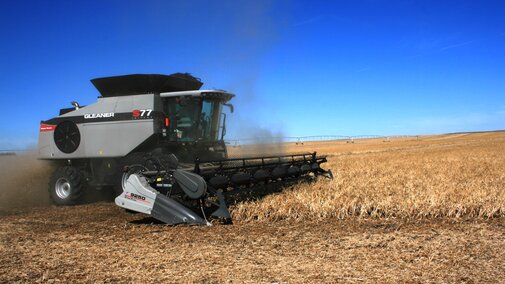If you’re in the midst of harvesting dry edible beans and considering how to improve harvest efficiencies, you may want to take a second look at transitioning to a direct harvest system.
In recent years more growers in the Central High Plains have moved to direct harvesting of dry edible beans instead of the conventional method of undercutting or rodding, windrowing, and then combining. It’s estimated that in 2015 20% of dry beans in western Nebraska were direct harvested, which requires only one pass with the combine.
Other growing regions such as North Dakota, Michigan, and Canada use direct harvest for the majority of their dry bean harvest.
Pros and Cons of Direct Harvest
Following are some reasons to consider direct harvest:
- Fewer harvest operations. This can translate into time and money saved.
- No need for early morning cutting and windrowing operations when the vines are tough. This is a labor consideration.
- Risk of wind moving windrows or rain mudding in or damaging pods after cutting is eliminated.
- No soil disturbance and more residue remains in the field.
- Less soil will move through the combine if direct harvesting correctly.
With all these advantages, why isn’t everyone direct harvesting?
Every production system has pros and cons that should be considered when deciding what best fits a given operation. Following are some reasons growers have shared for why they aren’t direct harvesting:
- Normally need to wait longer to get the crop out of the field, although crop desiccants can reduce this waiting time.
- Need to learn a new production system.
- Need to buy a new or different combine header.
- A neighbor or nearby grower had a disaster.
- Total harvest loss can be higher.
- Special insurance considerations apply, but this is changing.

Harvest Loss. Potential harvest loss is often the major concern with direct harvesting dry beans. With conventional harvest, an average yield loss of about 1.5 bu/ac can be expected in good conditions. This is based on a two-year study on 24 farms conducted by the University of Nebraska Panhandle Center. If conditions are poor with significant wind or rain after cutting, bean yield losses can increase significantly.
Further data gathered by the Panhandle Center indicate that direct harvest losses for pintos would average about 3.5 bu/ac. For great northerns losses would be about 4 bu/ac if good field practices are followed. In data gathered on farm from the 2015 (Figure 2) harvest season in the Nebraska Panhandle half of the 18 fields sampled had a 3 bu/ac or less loss with the most favorable field having a 1.5 bu/ac harvest loss.
On the other end of the spectrum one harvested field had an 11.7 bu/ac yield loss, demonstrating that care must be taken when considering direct harvest. Many factors play into this harvest loss but with a suitable upright bean variety, proper level field conditions, good weed control, the correct combine header, and favorable weather, total harvest losses can be minimized to a generally acceptable level.
If you’re transitioning to direct harvest, it’s important to estimate harvest loss and identify where improvements can be made. See Nebraska Extension Circular EC309, listed below, for methods of estimating harvest loss.
Assuring Good Yield
Yield loss at harvest is not the only consideration. What you actually haul into town to sell after harvest is the bottom line. The take-home message is to choose a good-yielding variety of upright structure and do all you can to minimize harvest loss by using all the farming practices that benefit direct harvest. Disease resistance and quality are also important traits to consider when choosing a bean variety.
Summary
Direct harvest is not just changing out your combine header. For successful direct harvest, focus on
- planting an upright bean variety with good height and long branches,
- planting into a very level soil surface,
- ensuring early uniform vigorous plants,
- provide good herbicide weed control, and
- using a combine header that has been designed for direct harvest of dry edible beans.
Flex draper heads work well.
Resource
For a complete guide to the direct harvest system of growing and harvesting dry edible beans see Nebraska Extension Circular Direct Harvest of Dry Edible Beans (EC309).

